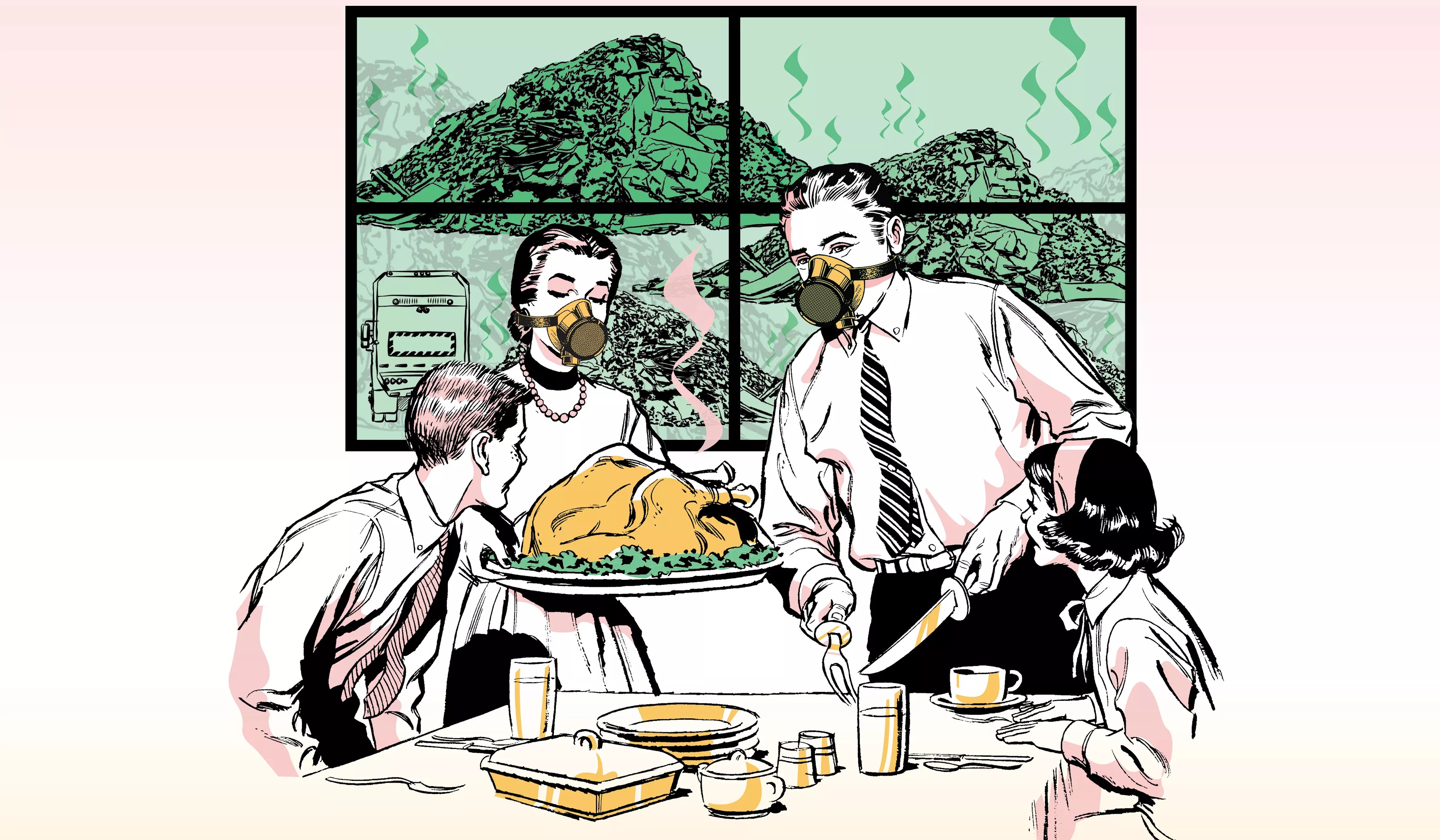
Lindsey Kelly

Audio By Carbonatix
Maybe you’re a regular reader. Maybe this is your first go-around. Either way, welcome to Table Scraps. This roundup is from my online series on the growing issue of food waste and what some Phoenix-area eateries, organizations, and everyday people are doing right. I started this column in January 2019 as a way to both educate myself, and to be more informative for you, on the little things we could do – habits we could break or kick up – to help combat food waste.
But there’s something I want to be clear about from the start – this isn’t a guilt trip.
This is my way of unpacking initiatives attempting to reduce kitchen waste and food loss. We’ve explored backyard composting to food packaging, nonprofits to etiquette history, and a few other topics relating to this global issue – including some drive-thru shaming (sorry).
And the photos are fun, so of course there’s an entire Table Scraps slideshow.
So, heat up those leftovers and settle in. Here’s a condensed collection of all the Table Scraps stories so far.
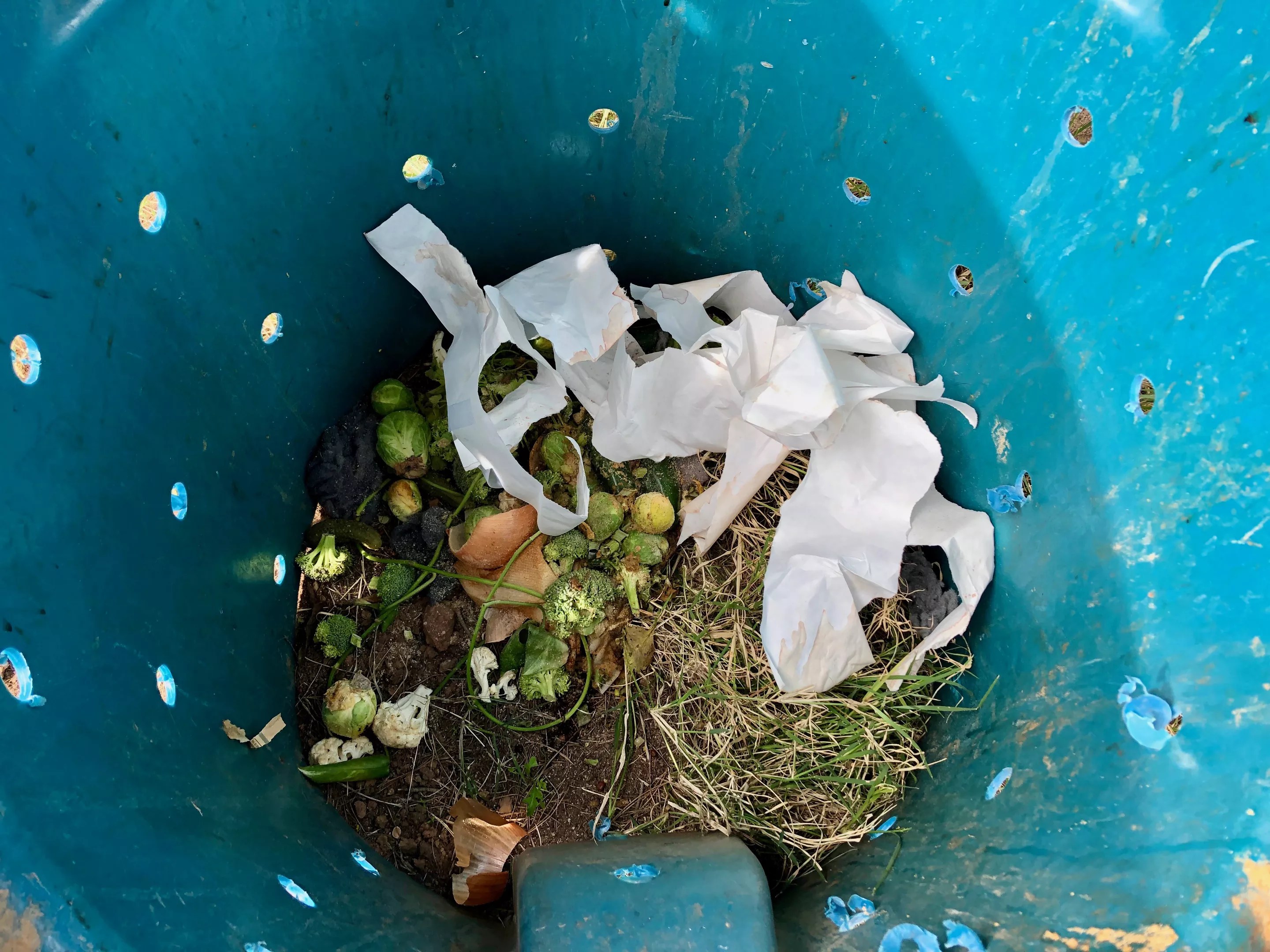
A beginner’s guide to DIY composting.
Lauren Cusimano
Food Waste – Why Should You Care and How You Can Help by Composting
We’d first like to answer the questions: Why is food waste a problem and, more importantly, why should we care?
“Food scraps and yard waste together currently make up about 30 percent of what we throw away, and should be composted instead,” according to the Environmental Protection Agency. “Making compost keeps these materials out of landfills where they take up space and release methane, a potent greenhouse gas.”
For me, that’s the scary part. The environmental harm. A Forbes article puts it nicely – well, more frighteningly: Methane, a potent greenhouse gas from food rot has “21 times the global warming potential of carbon dioxide.”
But most of us already know there is a major food waste problem. However, people may assume this a restaurant or farm thing, or not really understand what the actual issue may be. Many might ask, “But what can I really do?” Well, one answer may be home composting.
Developing a composting habit could divert kitchen waste from the landfill, reducing those methane emissions. But first, you have to know how do it. In a nutshell, compost is organic material like food scraps and yard clippings used to help plants grow by adding it to soil. And it includes nut shells.
Black gold, as some farmers cutely call compost, is composed of three elements – brown, green, and water. Brown is yard stuff like dead leaves, branches, and twigs. Green is things like grass clippings, but also fruit and vegetable scraps. Water is water.
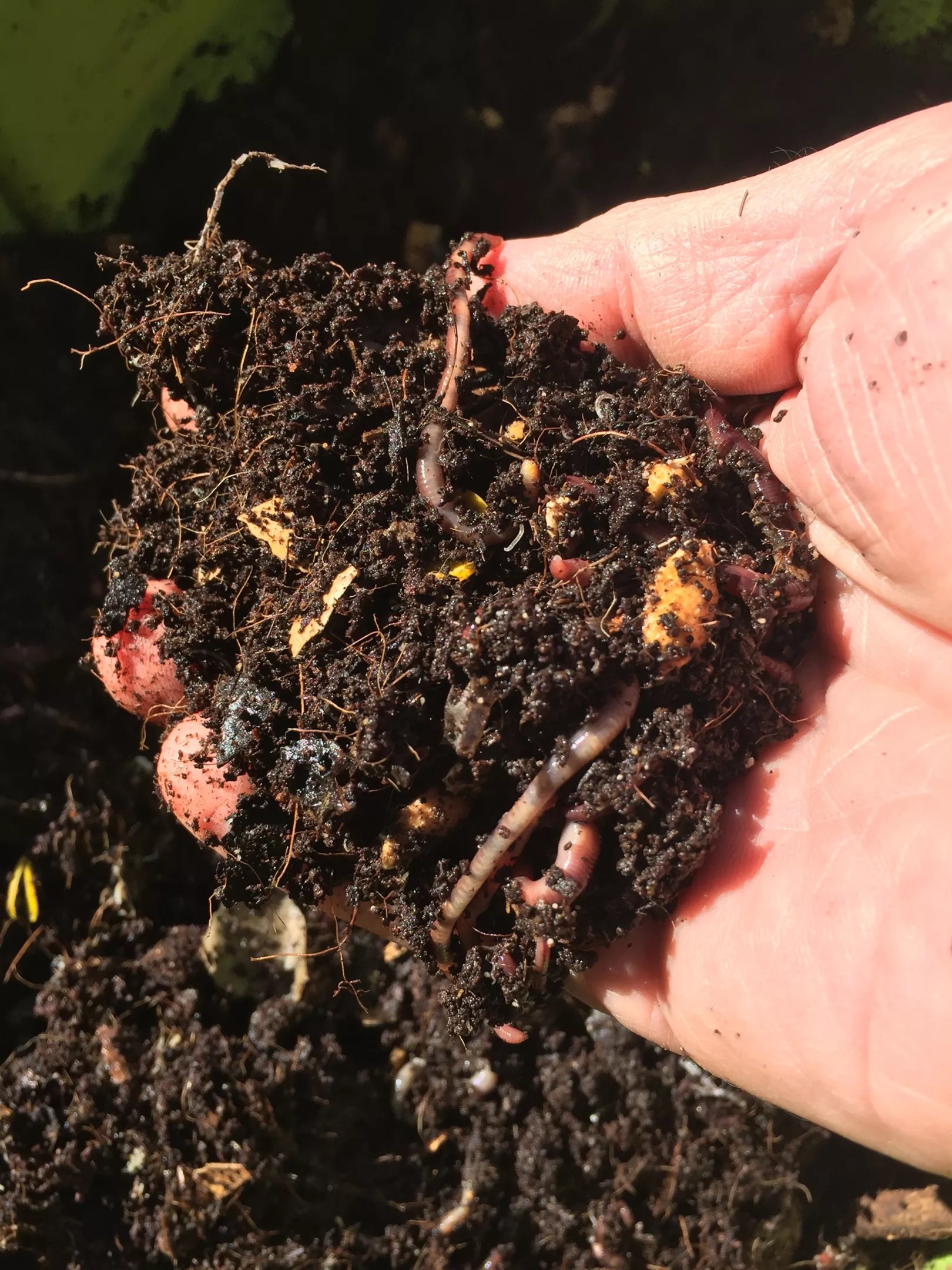
Completed compost, or “black gold.”
Courtesy of The Urban Farm
All this goes into a pile – hence the term compost pile or heap. It’s recommended you have equal amount of browns and greens and alternate the layers. According to the EPA, the brown materials provide carbon, the green materials provide nitrogen, and the water provides moisture to help break it all down.
One of the more fascinating aspects of this is what can actually go in that compost pile.
This list is surprising. We mentioned fruits and vegetables, yard trimmings, leaves, and grass clippings. But you can also toss in eggshells (sorry, garbage disposal), coffee grounds and filters, whole tea bags, and old houseplants that just aren’t going to make it. You can also check that recycling can for paper, newspaper, and cardboard (then you shred). That can include paper towels, napkins, or tissues.
The more shocking ones, I feel, were cotton and wool rags, dryer and vacuum cleaner lint, fireplace ashes, and hair and fur. What? Every weekend of laundry, pullings from your hairbrush, and those old washcloths stolen from hotels can all be fodder for your compost pile.
The list of what not to compost is also interesting reading. No meat or dairy products, diseased or insect-ridden plants, fats, grease, lard, or oils, or yard trimmings that may contain chemical pesticides. No pet waste, either, and for the love of God, no black walnut tree leaves.
Find a dry, shady area within reach of your hose. Combine the brown and green materials, and wet down any dry material like shredded junk mail. Make sure the fruit and vegetable scraps are buried under at least 10 inches of compost material. Finally, according to the EPA, “when the material at the bottom is dark and rich in color, your compost is ready to use. This usually takes anywhere between two months to two years.”
You could cover everything with a tarp to keep things moist, or you could get a bin. They’re found at local hardware or gardening stores, or you can make one yourself. But you could also pick one up from the city.
Phoenix compost containers are constructed by inmate work crews from old garbage and recycle cans and are available for purchase for $5 flat – cash or card. You can pick one up at one of two transfer stations – the North Gateway Transfer Station or the 27th Avenue Transfer Station. It’s advised you call ahead for availability as containers are sold on a first-come, first-served basis.
Read the full installment, “Food Waste – Why Should You Care and How You Can Help by Composting.”

It’s just a communication, not an expiration.
Lauren Cusimano
How to Get Over the Mental Block of Misleading Expiration Dates
You’re about to go grocery shopping, or you’re deep in house-cleaning mode, so you throw open the refrigerator door and lean in. You’re ready to liquidate everything inside. You snatch up that plastic bottle of Zesty Italian and twist it around to check the date. It “expired.”
So, it’s out. In the trash (or maybe you at least recycled the bottle). There’s zero harm in this. You’re being responsible, keeping your home free of clutter, not poisoning yourself or your family.
In some cases, fine, chuck the salad dressing. But in many, many instances like this, just try to relax. That’s because, as many of us are starting to hear, the “expiration” date is not a thing. Or at least, not the thing you think.
For many of us, the expiration date is ingrained, but we don’t know the origin of these labels. We might think some high-up government agency came up with them. We must abide by them, for our own good. But as you might soon realize, expiration dates are about as serious as the “do not remove” mattress tag.
According to a Natural Resources Defense Council report, “Wasted: How America Is Losing Up to 40 Percent of Its Food From Farm to Fork to Landfill,” expiration dates are considered confusing. “‘Use-by'” and ‘best-by’ dates, commonly found on both perishable and nonperishable products, are manufacturer suggestions for peak quality,” it reads. “They do not indicate food safety, as is commonly believed, nor are they regulated.”
The United State Department of Agriculture confirms. “Manufacturers provide dating to help consumers and retailers decide when food is of best quality. Except for infant formula, dates are not an indicator of the product’s safety and are not required by Federal law,” it states on the USDA website.
So where or when does the government actually step in? Well in Arizona, it’s pretty limited. According to another NRDC report, the only date label you’ll find regulated by the state of Arizona will be on eggs. And even their shelf life was extended in 2018.

Christopher Wharton, an Arizona State University associate professor of nutrition and assistant dean of innovation and strategic initiatives.
Christopher Wharton
Because, twist, “expiration dates” don’t really exist.
Christopher Wharton, an Arizona State University associate professor of nutrition and assistant dean of innovation and strategic initiatives, can explain.
“It’s a misnomer in the first place. It’s rare to actually see ‘expires by.’ You usually see sell, use, or best by,” he says, “and none of them are actually expiration dates.” Wharton confirms there’s no federal guidance from the USDA or FDA on these dates labeled on food packing except for baby formula. So why are they even there?
We’ll start with “sell by.”
Because of our long food supply chains, “sell-by” dates are a communication from the producer to the grocery store. It basically expresses when to turn over the product on the shelf. “So sell dates aren’t bogus,” Wharton says, a word I really wanted to use. “They are meant to be a communicator, more to the grocer, say.”
But it’s confusing to the consumer, as Wharton says over 40 percent of consumers misunderstand the meaning of date labels – which is confirmed by the “Wasted” NRDC report.
“There’s probably a third of the food’s life or more still available after the ‘sell by’ date,” Wharton says. A third! And yeah, none of the dates have anything to do with food safety.
Next, “best by” and “use by.”
“‘Best-by’ and ‘use-by’ dates are really more about quality,” Wharton says. “That’s a communication from the producer to the consumer,” i.e., us. “Beyond which, it’s still perfectly safe for some period of time, maybe for a long period of time.”
So, these dates aren’t quite arbitrary, “perhaps just accidentally misleading,” he says. “People assume these mean it’s time to throw it out.”
But, that’s not to say food lasts forever.
Wharton says with some foods, as quality degrades, food safety concerns can go up, especially fresh products, like milk, eggs, and meats. “It makes sense that after some certain date, you should start worrying about food-borne illness,” he says. “That’s when it’s time to employ your senses.”
Meaning, a sniff test.
Read the full installment, “How to Get Over the Mental Block of Misleading Expiration Dates.”
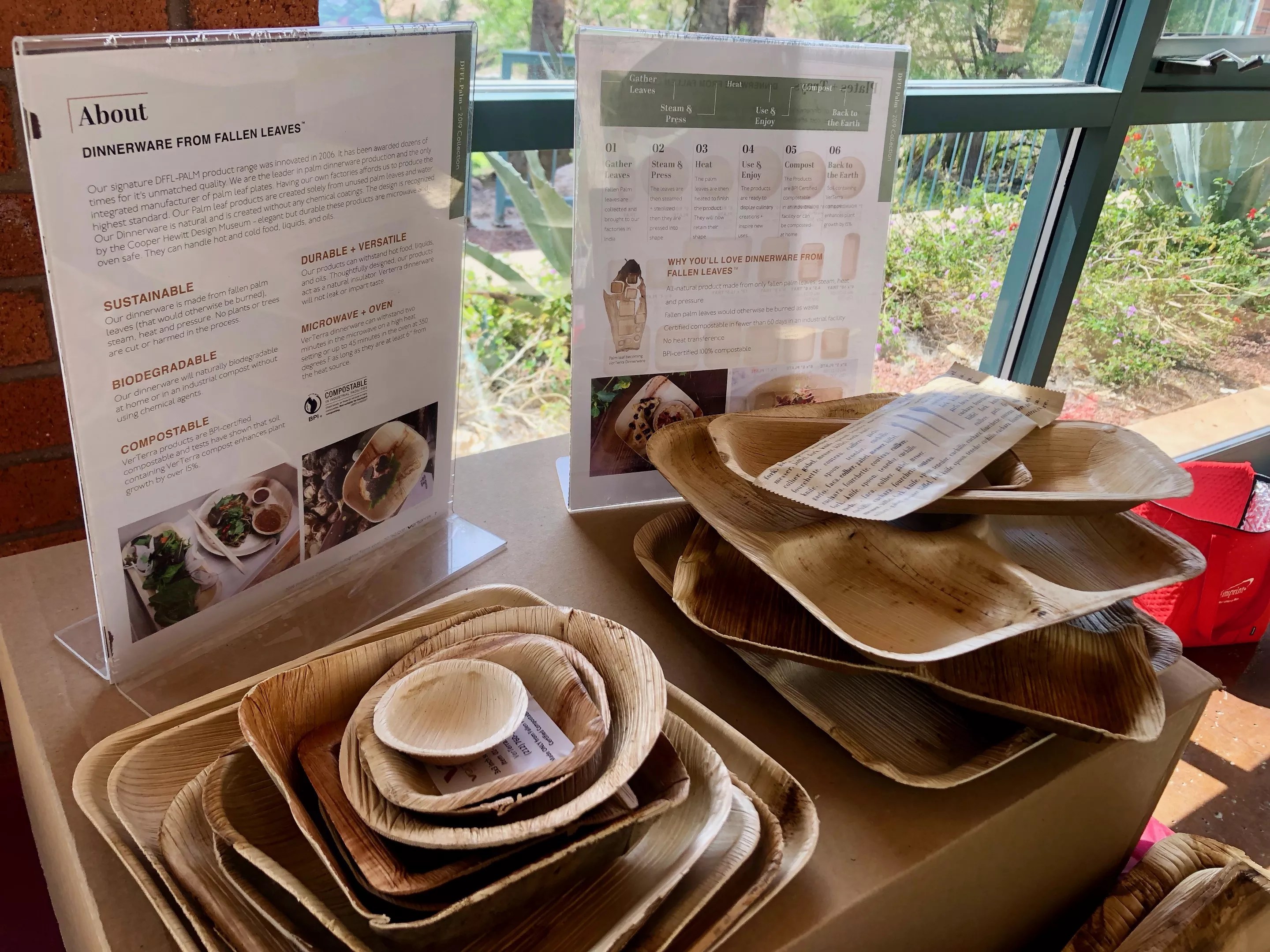
Going beyond the wrapper to tackle food packaging waste.
Lauren Cusimano
How Phoenix Is Fighting Food-Packaging Waste
To-go containers, plates, utensils, and, as we’re all well aware now, plastic straws – many items in the food-packaging world are ending up in landfills, too.
The EPA has an entire report about packaging waste. This one’s called “Reducing Wasted Food & Packaging: A Guide for Food Services and Restaurants.”
“Together, food and packaging/containers account for almost 45 percent of the materials landfilled in the United States, and some of these discarded materials are food-related packaging and containers,” it begins. And to drill down further, more than 23 percent of the material reaching landfills in the U.S. are containers and packaging. Yeah, nearly a quarter.
The EPA defines containers and packaging as “products that are assumed to be discarded the same year the products they contain are purchased.” That would be the product used to wrap or protect food and beverages, but can also be used for shipping, storage, and marketing.
It’s a major portion of municipal solid waste (MSW) and, according again to the EPA, amounted to 77.9 million tons of generation in 2015.
While restaurants are now starting to withhold straws from diners and use more eco-friendly packaging, why are we still seeing so many Styrofoam containers, plastic cutlery, and waxy plates in our dining and carryout experiences?
Instead of the blasé “What can you do?” response, a small group in Phoenix is actually doing something.

Meet Helene Tack, program development director for Local First Arizona.
Rick D’Elia
Meet Helene Tack, program development director for Local First Arizona.
“We field a lot of questions about sustainable packaging,” Tack said. “We’re always hearing how confusing it can be.” She said the subject has gotten a lot more attention since plastic straws became a better-known problem, but there’s still the issue of restaurant owners being very busy people.
It’s one of the reasons why Tack, along with Captain’s Restaurant Supply, organized the first-ever Sustainable Packaging Expo with the objective of encouraging businesses to use sustainable packaging.
Held on April 1, 2019, at the Arizona Heritage Center, the event was a gathering of eco-friendly packaging manufacturers who were ready to talk. They talked about compostable and recyclable materials used commonly in the food service industry, as well as the materials’ end of life. They talked about packaging, cutlery, and dinnerware made with everything from plastic bottles to cane sugar, cornstarch, wheat, and dead leaves.
David Charns of Captain’s (Food Service & Industrial Packaging Sales & Consulting, it said on his card) helped organize the Phoenix event as well, referring to it as “very anti-corporate.” He said the reason his company wants to participate in something like this is because of the responsibility it takes on.
“If it’s going to a landfill, it really should be compostable,” he said. “It’s just better to do the right thing.”
So, will there be a Sustainable Packaging Expo 2020?
“We do want to do this again for sure,” Tack says.
Read the full installment, “How Phoenix Is Fighting Food-Packaging Waste.”
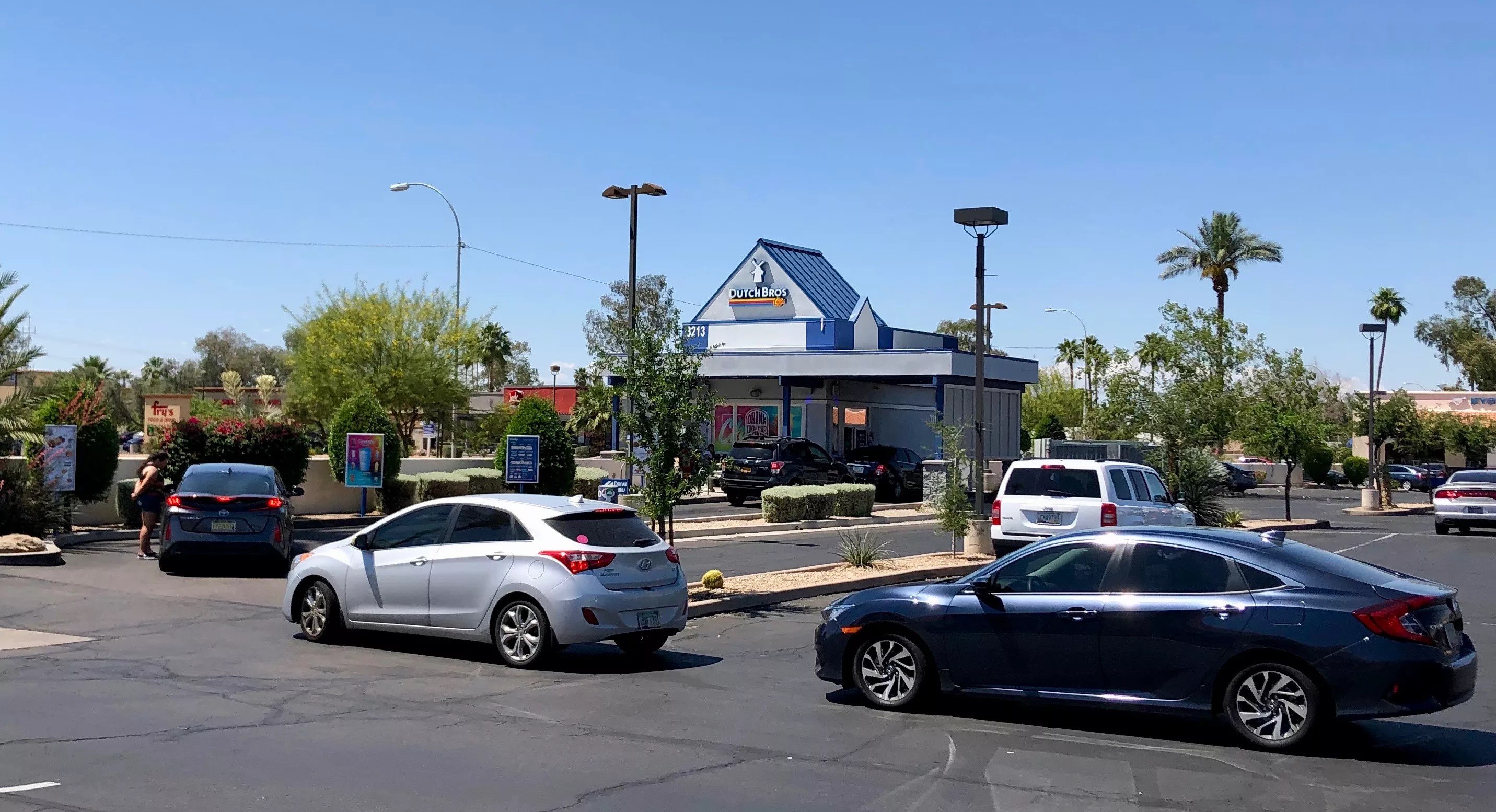
Sure, a 3 p.m. pick-me-up is needed, but there has to be another way.
Lauren Cusimano
Idling in a Drive-Thru? You’re Adding Ozone Pollution
Sure, this is a series about food waste. However, this part will focus on air quality. Yes, food waste and air quality are related. It’s this: drive-thrus.
To many, even those who may consider themselves environmentally friendly, sitting in a fast food or coffee shop drive-thru is not hurting anything – except maybe your fixed budget. But in fact, this action is one of three tiers targeted by the annual “Commit to One Day, Help Keep Ozone Away” campaign launched by the Maricopa County Air Quality Department.
Ozone pollution prevention tips include everything from carpooling to delaying painting projects, but the second bullet reads, “Avoid waiting in long drive-thru lines. Park your car and go inside.”
Ronald Pope, atmospheric scientist with the Maricopa County Air Quality Department, can explain. “Here at Maricopa County, we experience two big problems with air pollution,” he says in a phone interview.
One is particulates, like dust and smoke, and the other is ozone. The big gaseous pollutant is especially an issue during the summer.
“When we’re looking at drive-thrus, of course you have cars that are idling and emitting various chemicals into the air,” he says.” Some of those chemicals are what react together to create the ozone pollutions.”

“We can actually see decreases in air pollution throughout the city.
Lauren Cusimano
Pope says those chemicals are nitrogen oxide, or NOx, and hydro-carbons, also known as volatile organic compounds, or VOCs. The VOCs and the NOx react in the sunlight to create ozone pollution. Plus, mountains surround Phoenix, which kind of holds all this in.
“A vehicle, when it’s idling, is less efficient than when it’s running at speed. If you have a vehicle that’s just sitting there idling, it’s putting out these compounds that contribute to air pollution for an unnecessary cause,” he says.
So yes, if you didn’t catch that, you’re actually putting out more pollution at an idle than you would be driving (of course, that’s up to a point). “It’s kind of counter-intuitive,” Pope says, “But cars are much more efficient at burning the fuel when they are running.”
Maricopa County Air Quality Department communications supervisor Bob Huhn says, also via phone, idling is not one of the ozone-increasing habits people think of right away (that and refueling after dark).
“Some types of business have more folks visiting them,” Huhn says. We’re talking about Dutch Bros., Starbucks, Chick-fil-A. “We don’t want to take customers away from those businesses. That’s why we ask folks if they’re going to go to those types of places, to park their cars and go in.”
Huhn says the biggest culprit is the automobile, and they are specifically targeting single-occupant drivers. Pope says of man-made sources contributing to ozone in Maricopa County, more than 80 percent are from cars – idling cars, driving cars, cars altogether.
Some people must take advantage of drive-thrus. Customers with disabilities, people with dogs or kids in the car, even someone in a hurry who sees there’s no wait at the window. (And yes, owners of electric cars charged with solar power crawling through the drive-thru with no tailpipes, you’re off the hook.)
So, if you can, if you’re able, park it.
Read the full installment, “Idling at the Dutch Bros. Drive-Thru? You’re Adding Ozone Pollution.”
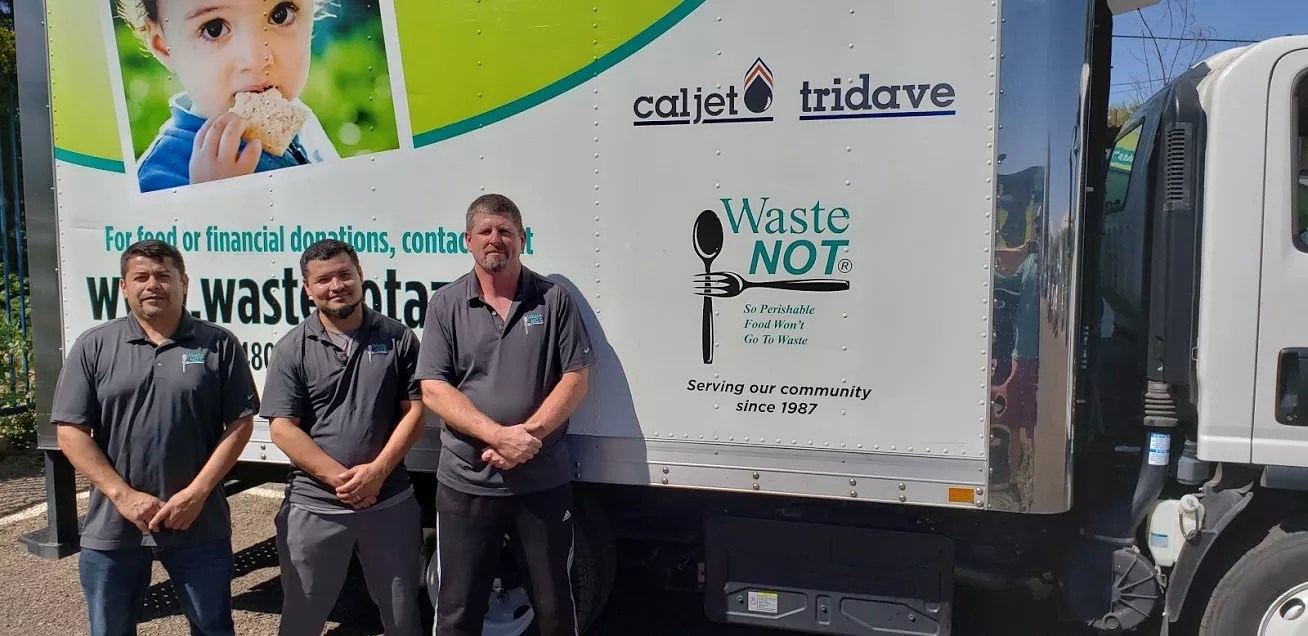
Waste NOT is a delivery service in Phoenix taking food to those in need that would otherwise be discarded.
Waste
How Waste NOT Combats Hunger and Food Waste
Do you ever hear this? “Oh, you know what would be a good idea? If restaurants and grocery stores gave their extra food to the homeless.” Well, that’s happening. A local nonprofit organization has been working for years to combat two major issues – hunger and food waste. It picks up unsellable food in the morning and brings it to agencies feeding those in need by the afternoon.
Sounds simple. It is, and it is not. It’s Waste NOT.
Kate Thoene, who took over the role of executive director in April 2018, can take us to the beginning in 1987.
A woman in need got to the point of collecting food behind restaurants that had been tossed for her and her family. “And there was so much food that she started giving excess away to shelters and nonprofits,” Thoene says. “It was insane, the abundance of food that was being thrown away, and it just grew organically from there.”
At first, Waste NOT was absolutely focused on hunger. But more recently, it’s become equally about waste reduction. Waste NOT has become a transportation service, picking up food and delivering it to organizations feeding those in need. The staff collects large-scale food donations from restaurants, grocery stores, catering companies, and more.

Kate Thoene, executive director at Waste NOT, says she’s thrilled to be working with United Food Bank.
Waste
In 2018, Waste NOT delivered 3.5 million meals to 87 nonprofits. That means it diverted 1,750 tons of food from local landfills, equating to more than $4 million of economic value. In 2019, Waste NOT has so far recovered more than 562,000 pounds of fresh food and delivered it to local agencies.
That’s using a couple of refrigerated box trucks, and a five-person paid staff: Thoene, program director Sheila Perlman, and three drivers – Jorge Hernandez, Tim Hunt, and Jorge Vega. Thoene says they’re a small but mighty team.
Here’s an example of how it works.
It’s 6 a.m., and Trader Joe’s has some cases of strawberries that have been kicking around for too long and must be pulled from the store. Waste NOT‘s delivery drivers pull up, load the cases of fruit, and head to the next stop. It continues.
By the afternoon, our little nonprofit is delivering this food directly to the agency, like a shelter or food pantry. For instance, take UMOM New Day Centers. Waste NOT drivers ring the doorbell out back, and head chef Rose Witt comes out and picks what she’ll be serving that night. If she’s interested in the strawberries for say, a dessert, she claims the cases.
The trucks must be empty by the end of every day. That’s because there’s no giant cooler or freezer at some Waste NOT warehouse, so drop-offs can’t wait until tomorrow. Therefore, everything is same-day delivery.
Thoene is working on another hopefully record-breaking year. After just over 14 months in this role, she calls the job an adventure with endless potential.
“In the future, I hope that every food business knows about us,” she says. “I want to have a presence in the food community here.”
Read the full installment, “How Waste NOT Combats Hunger and Food Waste.”
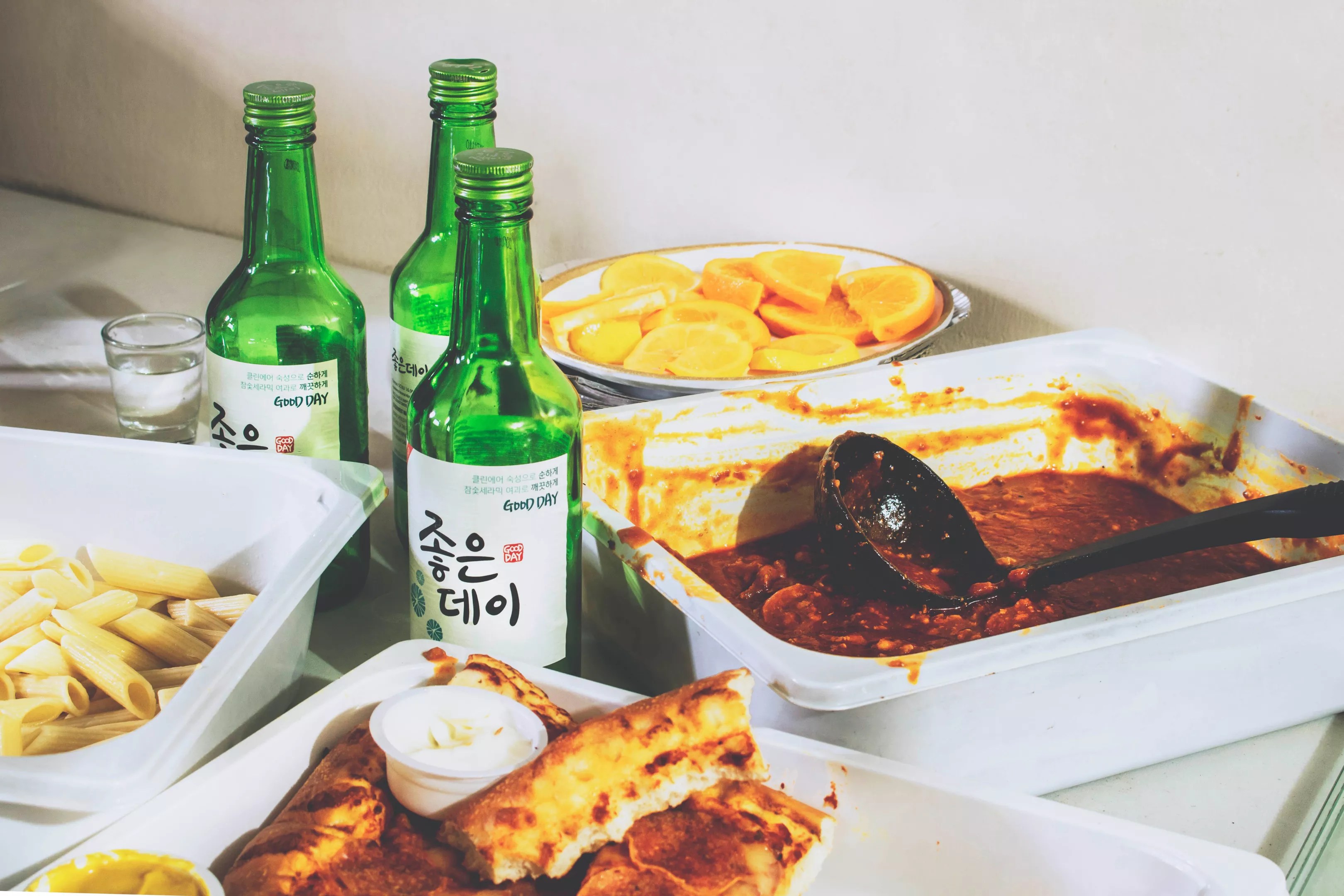
Leftovers can help us fight food waste.
Eiliv-Sonas Aceron on Unsplash
Leftovers Can Save the Freaking Planet (Sort of)
I love leftovers. The arguments that they’ll give you a stomach virus, are gross, are unposh, or are for quitters (meaning for those who can’t finish their food) infuriate me. Leftovers save money, save you from overeating, and save the freaking planet. Well, they can at least help.
But it took a long time for society to view them as the saviors they are.
“An Economic History of Leftovers” from The Atlantic, states how by the 1960s, leftovers were becoming a joke, “with a grumbling husband and a mystery casserole playing stock roles.” This was because of postwar plenty. That outlook continued for decades. And now, it’s commonly reported that Americans spend only about 10 percent of their income on food.
However, since food waste has become a more apparent issue, leftovers are seen as a combatant of food waste.
The NRDC says, “Consumers can waste less food by shopping wisely, knowing when food goes bad, buying produce that is perfectly edible even if it’s less cosmetically attractive, cooking only the amount of food they need, and eating their leftovers.”
Bam! Leftovers are right there. It’s not just a next-day lunch hack, but also an actual, suggested strategy. Leftovers primarily come from two places: home cooking and restaurants. But taking home food from restaurants, that’s a different story, and a different history.

Geordie
Wrigley Mansion
According to a Smithsonian Magazine post, “Unwrapping the History of the Doggie Bag,” the modern doggie bag originated in the 1940s. It was called as such because it encouraged diners to carry home scraps or bones to pets.
But then, the doggie bag became the to-go box – meaning humans were planning on eating more of that same meal later. Then, portion sizes started to skyrocket (growing by 50 percent from 1977 to 1996 according to a History article) and taking home leftovers became widely accepted.
And hopefully by now, it’s encouraged, because chefs also love leftovers.
Need proof? At Geordie’s Restaurant inside Wrigley Mansion, you’ll find 32-year-old Chef de Cuisine Ashley Goddard. She has a special relationship with uneaten food.
Goddard has a unique perspective: She was raised in an agricultural setting in Michigan till she was 14.
“I grew up on a farm with a big family, so leftovers were a really big staple for us,” she says. She was also close to her grandmother. She says she feels lucky, being raised by a member of the Depression-era generation.
“Everything was important, nothing gets thrown away, everything gets used,” she says of those days. “Being raised on a farm like that, it just gives you a new perspective on food.” That outlook revolves around utilizing everything she can, because, “Somebody has to put in all of this work to put these things on the table for us.”
Goddard supports Geordie’s guests taking uneaten food – even though her dishes do taste best on that first go-around, she admits. Something like pasta, reheated, just wouldn’t be the same quality, not to say it wouldn’t be good. But above all, she encourages diners to bring home leftovers.
Read the full installment, “Leftovers Can Save the Freaking Planet (Sort of).”
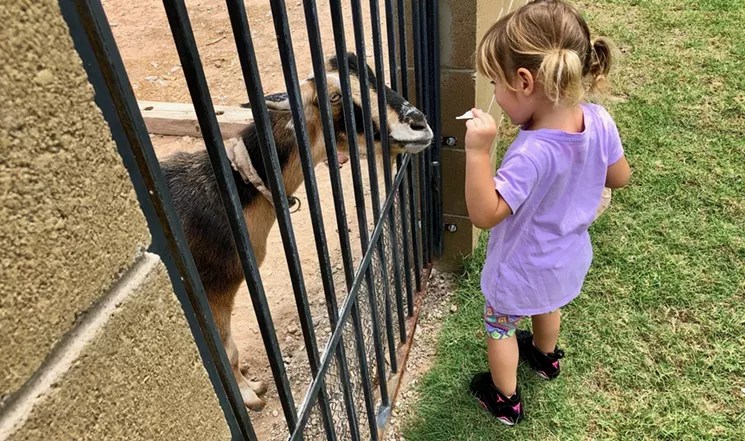
You can certainly feed some animals food scraps – if it
Lauren Cusimano
Pets Aren’t Garbage Disposals, but They Can Help Combat Food Waste
The idea of feeding animals, domestic or otherwise, our uneaten food is not new. It is most likely understood that our domestic pets are not four-legged garbage disposals, but there are ways to treat yard animals and neighborhood pets to food scraps that might otherwise become food waste. That is, if it’s done safely and lawfully.
Our good pals at the EPA have thoughts about reducing wasted food by feeding animals. Feeding animals is high, in fact, the third tier of EPA’s Food Recovery Hierarchy – an inverted pyramid of actions organizations can take to prevent and divert wasted food.
“With proper and safe handling, anyone can donate food scraps to animals,” the EPA website reads. That’s followed by, “There are many opportunities to feed animals, help the environment, and reduce costs.”
The report “Leftovers for Livestock: A Legal Guide for Using Excess Food as Animal Feed” was put together by the Harvard Food Law and Policy Clinic and the Food Recovery Project at the University of Arkansas. It starts, cruelly enough, with the fact that the United States wastes approximately 160 billion pounds of food each year. The guide shoots to encourage the appropriate and lawful diversion of food scraps to animals, but if comes with a bit of a history lesson-slash-warning.
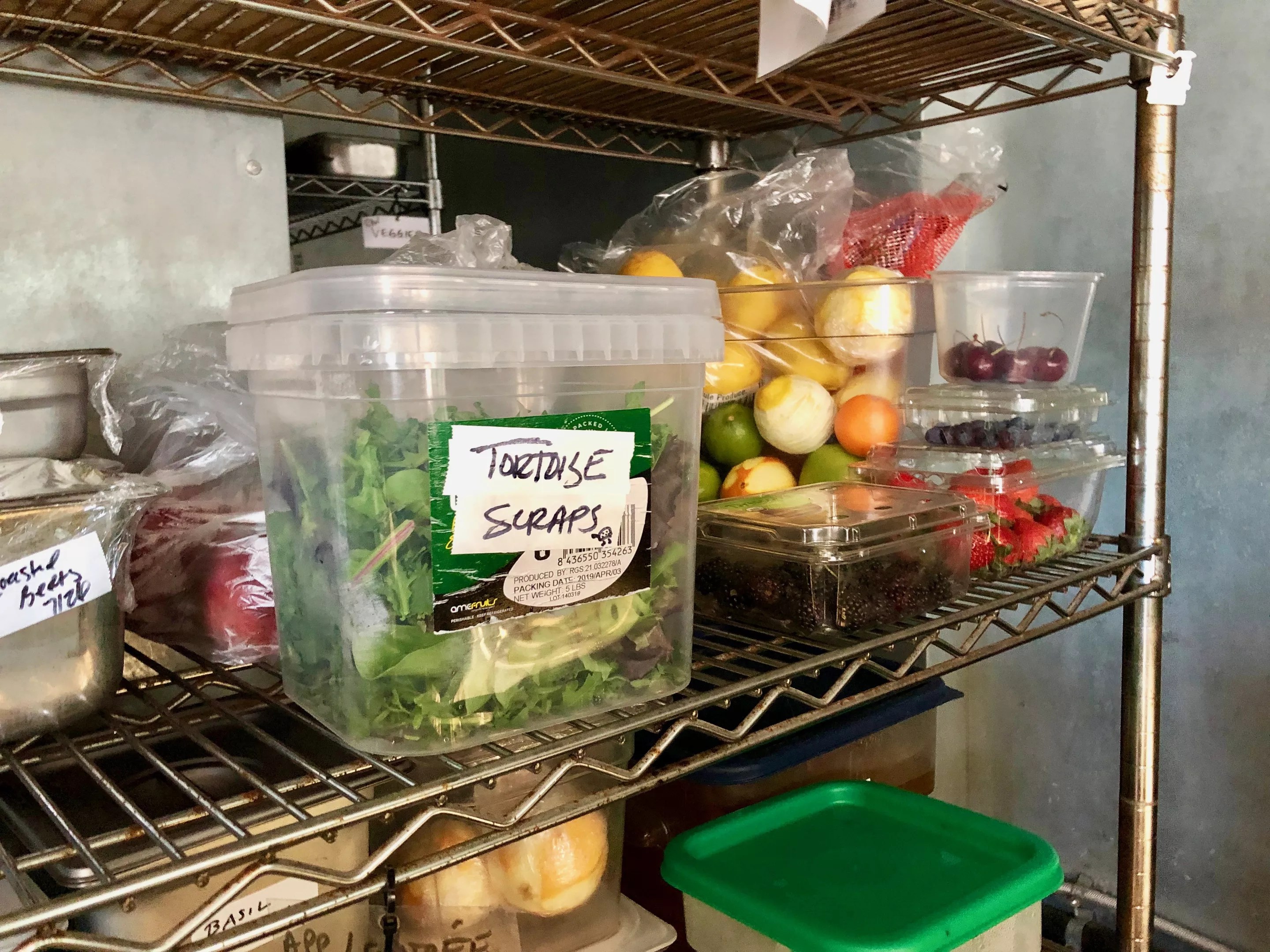
The designated tortoise scraps bin at The Farish House in downtown Phoenix.
Lauren Cusimano
Veterinarian James H. Maciulla – who goes by Jim – is an associate dean at the University of Arizona College of Veterinary Medicine. To condense it for you, he says domestic pets like cats, dogs, birds, reptiles, etc., may take in some scraps, but not much else.
The Arizona Game and Fish Department offers some helpful information on the captive desert tortoise diet. The AFGFD site states desert tortoises are completely herbivorous, and even a captive tortoise should be allowed to graze on grasses, leafy plants, and flowers, as those foods meet tortoises’ nutritional needs. But tortoises can eat some veggies trimmings, too.
“Produce can serve as a supplemental food source if you are unable to establish plants within the enclosure,” it reads. “Dark greens rich in minerals and vitamins such as collard, kale, mustard greens, turnip greens, cilantro and parsley can be offered as a short-term alternative or as a supplement to grasses.”
Restaurant owners are free to do this, too.
Lori Hassler, owner of Farish House, which opened in February 2019, has two tortoises. Sandy Sam and Lollipop Sugarface (a 6-year-old had the honor of naming them) have free roam of the backyard at Hassler’s ranch-style Arcadia home.
Sometimes they forage around the backyard, but they often eat vegetable scraps from Hassler’s own kitchen and from Farish House. There’s even a designated tortoise bin.
The little bin in the walk-in refrigerator will collect wilted radicchio, trimmings from endive leaves, arugula, but no romaine or iceberg lettuce. And on special occasions, “They love hibiscus flowers, that’s like a treat or candy,” Hassler says.
This is all a happy coincidence, as reducing food waste is an important issue to Hassler personally, who says waste is minimal at Farish House. “You want to make use of everything,” she says.
Read the full installment, “Pets Aren’t Garbage Disposals, but They Can Help Combat Food Waste.”
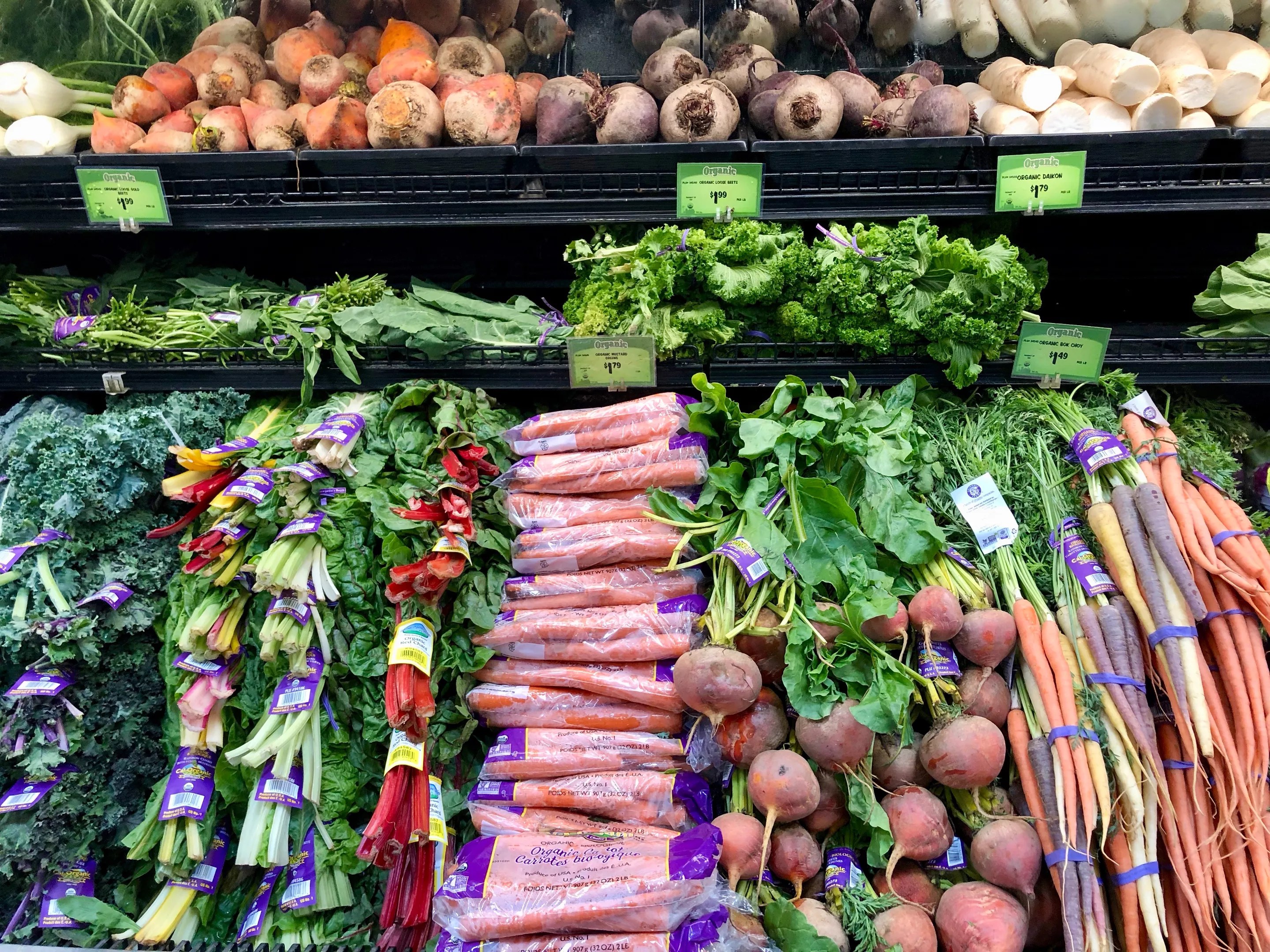
We could all shop a little smarter and waste a little less.
Lauren Cusimano
How Shopping Smart Can Reduce Your Household Food Waste
Whether you have an enthusiasm for grocery shopping or consider the whole thing a chore, food shopping – for a lot of us – has to be done. And, considering the gloomy outlook of climate change, the errand has a way of being done right. That means shopping smarter and wasting less.
Let’s cover some modern-day tips.
If you haven’t already, get like five to 10 reusable bags, depending on your household. They’re for sale at almost every grocery store, and your mom or aunt most likely has more than 50 and would love to give you some.
Another tip? Check out the ugly food.
Rethink Food Waste Through Economics and Date, or ReFED, is a multi-stakeholder nonprofit focused on this whole concept, including imperfect produce. ReFED highlights potential landfill diversion as totaling 266,000 tons of food waste by consumer-facing businesses, “Accepting and integrating the sale of off-grade produce (short shelf life, different size/shape/color), also known as ‘imperfect produce,’ into food business menu planning and product lines.”
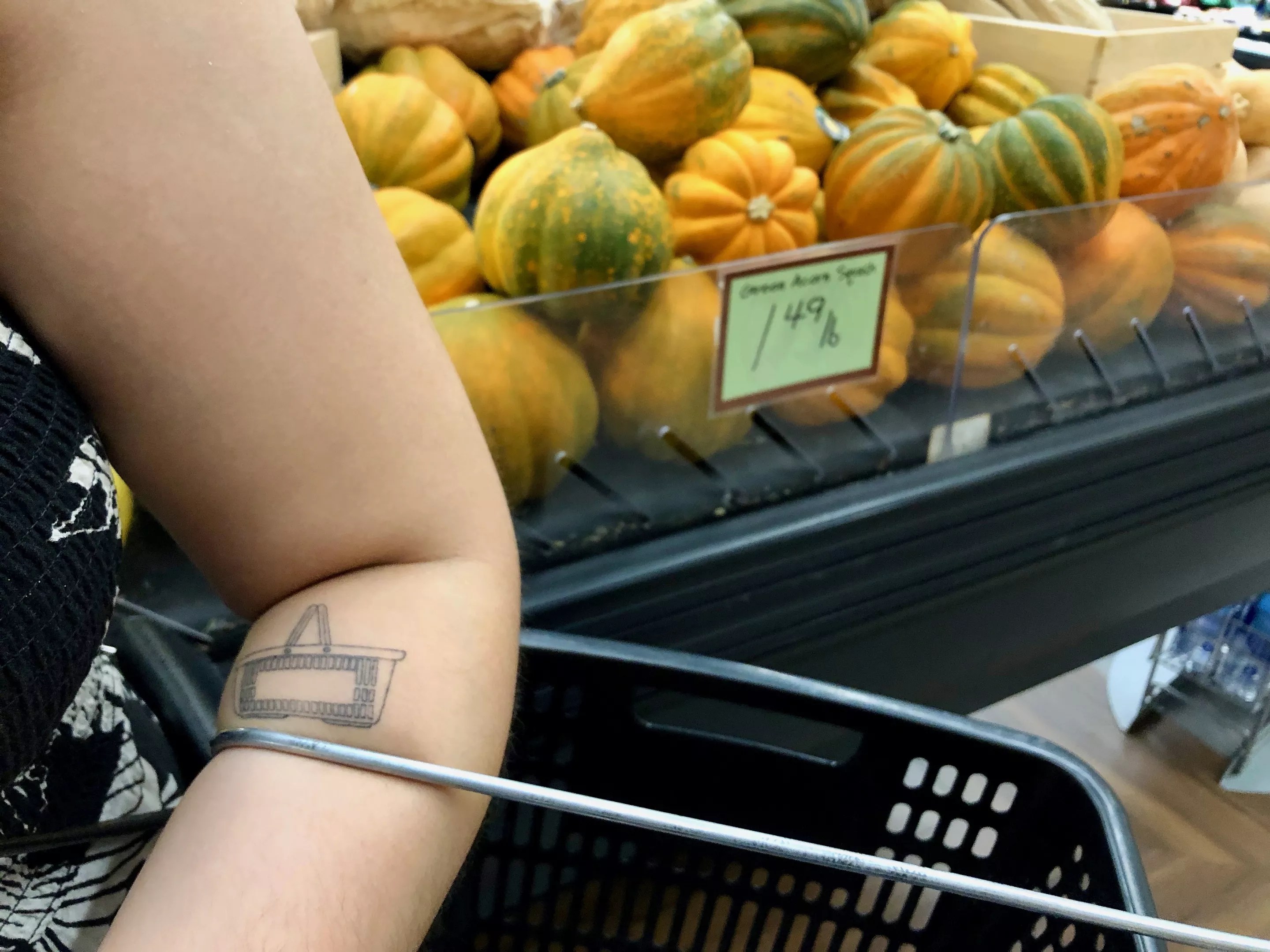
Get ready to hit the aisle.
Lauren Cusimano
That means as a consumer, you are heavily encouraged to check out the imperfect produce shelf. Many grocery stores now are offering the ugly food rack.
And of course, go with a list. If you have a wandering hand, or practically camp out in front of the clearance section, make a list before you shop and stick to it.
The NRDC can back us up on these tips. “Much food waste begins with choices made at the grocery store, which often are influenced by store promotions. Bulk discounts, merchandising that encourages impulse buys, and high-volume promotions such as buy-one-get-one-free all contribute to consumers’ purchasing items or quantities that they are unlikely to consume,” the “Wasted” report reads.
“If you don’t make regular use of a grocery list or if it’s not really well organized, you’re – possibly – much more prone to impulse items,” says Christopher Wharton, the ASU assistant dean and nutrition expert. Yeah, he’s the guy from the expiration dates section.
“One of the phrases we use is, ‘Everything has a destiny,'” Wharton says. “You know what recipe it’s going into; you know what meals this is for. So hopefully, that saves money and avoids the waste.”
Read the full installment, “How Shopping Smart Can Reduce Your Household Food Waste.”